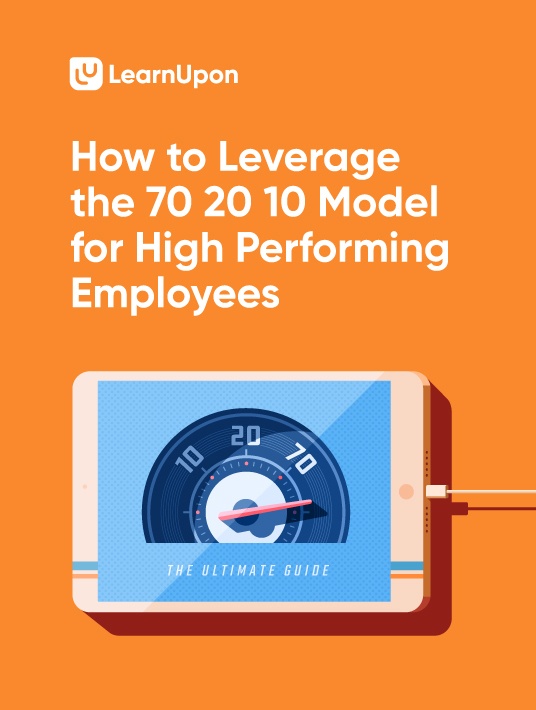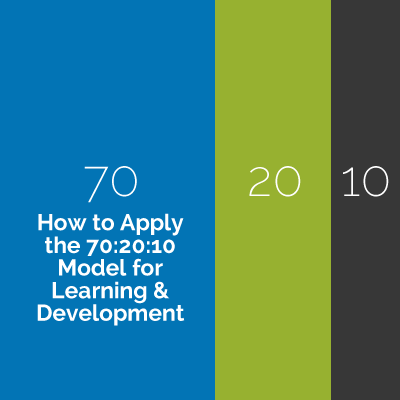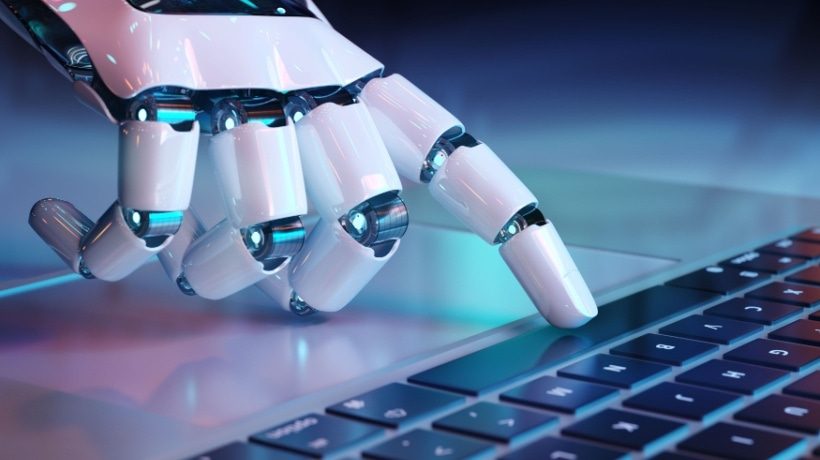What Is The 70 20 10 Model?
70 20 10 is a Learning and Development theory that encapsulates all of the different ways that people learn. Learning from experiences, interacting with others, or through training, are at the core of this approach.

Organizations use this model to shift their focus from training to performance so they can provide their workforce with a more holistic approach to learning. Maximizing the impact of learning through experience, socialization, and formal training methods enables businesses to create and support high-performing workforces.
Why Use This L&D Model?
Around since the 1980s, one of the primary reasons organizations have adopted the 70 20 10 model was to implement a learning strategy that maximizes workforce Learning and Development, while boosting employee performance.
While traditional learning, delivered through formal training programs, might be most effective to address skills gaps, performance issues, or retraining needs, 70 20 10 focuses on learning in the context of the workplace. It aims to make good employees great by providing a diverse range of opportunities to learn through different methods.
It’s important to note that the 70 20 10 ratios aren’t set in stone. They should be viewed as a general guide to each type of learning. The specific breakdown may vary depending on your organization’s Learning and Development needs.
The 70 20 10 Breakdown
The 70 20 10 model states that people obtain:
- 70% of their knowledge from job-related experiences,
- 20% from interactions with others, like coworkers and managers,
- 10% from formal learning events.
70% Of Learning Is Experiential
Experiential learning happens through completing daily tasks, resolving issues, and regular practice. This learning is informal, typically self-directed, and enables employees to learn through on-the-job experiences. It’s beneficial for employees as it allows them to explore and refine their job-based skills. It also enables them to make their own decisions in order to complete assigned tasks. Employees are encouraged to address challenges, ask questions, learn from their mistakes, and be open to feedback on their performance.
By completing a task, your employees are more likely to it pick it up more easily and quickly than they would if they were just instructed on how to do it. And they’re more likely to retain that learning as they’ve experienced it first hand.
Ultimately, this part of the model is about autonomy. Your employees are learning through doing. And in the process, they're becoming more knowledgeable and prepared for future challenges.
20% Of Learning Is Social
Social learning happens by interacting with and observing other people. In the workplace, this occurs through co-workers and managers. By completing tasks or projects and overcoming challenges together, your employees learn from their peers while working towards a common goal.
Learning from others can also be achieved through mentoring and coaching. For example, if a given role requires strong negotiation skills, the best way for an employee to learn this skill is by being guided through a negotiating scenario by a peer or manager who’s adept at this skill. The employee could first observe a mock negotiating scenario and then be coached through one. It’s trial by fire, without the real-world danger of course! The employee learns through observing and interacting under the guidance of others, an opportunity that may not be possible to achieve through a more formal type of training.
The effectiveness of social learning heavily depends on the culture within your organization. It’s important to look at how you can support and facilitate social learning. Embracing it can lead to a more productive work environment and stronger culture through building teams who are willing to support and learn from each other.
10% Of Learning Is Formal
Formal learning, the most well-known aspect of the model, is learning that’s delivered in a structured way. Used to improve employee performance through goal-orientated and Instructor-Led Training, it complements the experiential and social learning methods. It’s also great for establishing baseline knowledge for a given topic.
Formal learning falls into two buckets, face-to-face and online. Face-to-face takes the form of training sessions, tutorials, seminars, workshops, and group presentations delivered in one place, that’s typically a classroom-like setting.
Online learning, delivered through a Learning Management System (LMS), allows you to provide training in a wide range of formats, from SCORM or xAPI-based courses to webinars and videos. Your teams’ can learn in their own time, at their own pace, wherever they are. And you can easily track training progress to measure the impact of your programs on workforce performance.
Meeting Your Employees’ Learning Needs
Learning and Development according to the 70 20 10 model primarily happens through on-the-job experiences and socialization.
However, it’s argued that this model doesn’t focus enough on more structured learning methods. Formal learning, even though it makes up the minority 10%, is vital for achieving your corporate learning objectives.
Get started with this model by identifying how it can help your organization to achieve its employee development goals. Experiment with different breakdowns to see if it will meet your workforce’s needs. You’ll soon discover if it’s the right learning strategy for your organization. Download the eBook How To Leverage The 70 20 10 Model For High Performing Employees and get to discover all about the 70 20 10 model, an L&D theory that encapsulates all of the different ways that people learn. Join the available webinar, too, to find out more insightful information about the 70 20 10 model.








